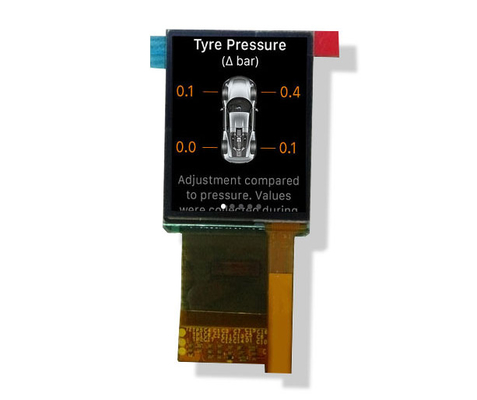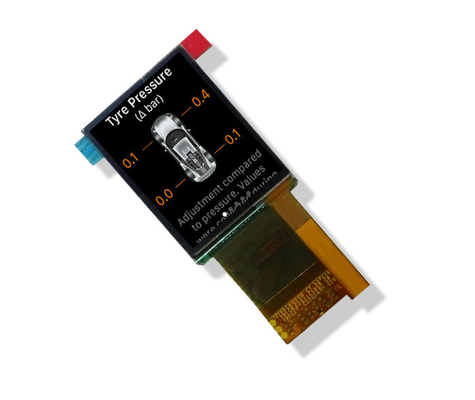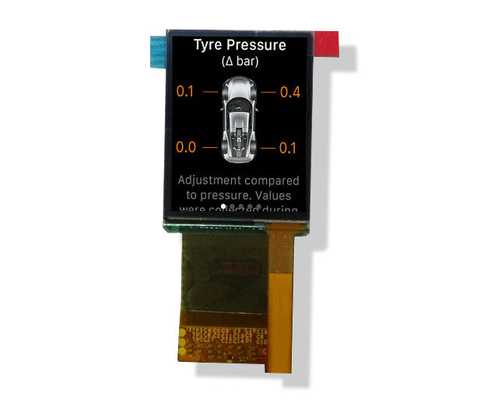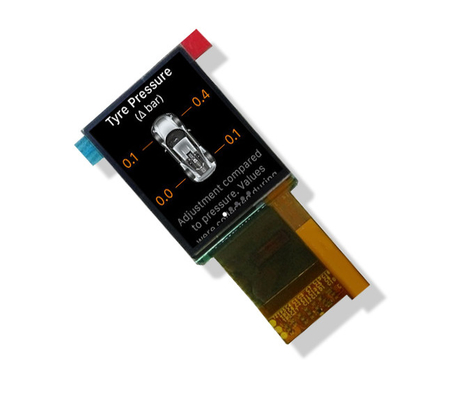-
Layar TFT LCD
-
Layar TFT Layar Sentuh
-
Layar TFT Bulat
-
tampilan warna tft
-
Modul layar AMOLED
-
Layar OLED mikro
-
TFT Tipe Batang
-
Tampilan TFT persegi
-
Layar LCD Kecerahan Tinggi
-
Tampilan LCD COB
-
TFT yang Dapat Dibaca Sinar Matahari
-
Layar TFT UART
-
Modul Layar LCD
-
tampilan PMOLED
-
Tampilan epaper
-
Tampilan Digital LED
-
Panel sentuh kapasitif
1.45 inci AMOLED LCD Screen Module Dengan Fungsi Sentuh 350 Kecerahan 272x340 Resolusi MIPI Interface 24 Pin
| Tempat asal | Cina |
|---|---|
| Nama merek | ESHX |
| Sertifikasi | ISO14001/ ISO9001/IATF16949 |
| Nomor model | ESHX0415A-CP |
| Kuantitas min Order | 1000 |
| Harga | dapat dinegosiasikan |
| Kemasan rincian | Blister + kotak busa + kantong gelembung + dalam karton + master karton |
| Waktu pengiriman | 6 minggu ~ 8 minggu |
| Syarat-syarat pembayaran | T/T |
| Menyediakan kemampuan | 50K per bulan |

Hubungi saya untuk sampel dan kupon gratis.
Ada apa:0086 18588475571
Wechat wechat: 0086 18588475571
Skype: sales10@aixton.com
Jika Anda memiliki kekhawatiran, kami menyediakan bantuan online 24 jam.
x| Teknologi Tampilan | Modul Tampilan AMOLED | nama | Panel OLED |
|---|---|---|---|
| Ukuran | 1,45 inci | Resolusi tampilan | 270*340 |
| Cahaya | 350 cd/m2 | Area yang terlihat | 23.01*28.77 (mm) |
| Jaminan | Jaminan kualitas satu - tahun untuk setelah - layanan penjualan | ||
| Menyoroti | 1.45 inci AMOLED LCD Screen Module,272x340 AMOLED LCD Screen Module,Modul layar LCD AMOLED 24 pin |
||
1Layar LCD AMOLED berukuran.45 inci dengan kecerahan 350, resolusi 272x340, 24 pin, antarmuka MIPI, modul tampilan berukuran kecil dengan fungsi sentuh
A: Parameter produk
![]()
B:Gambar produk
![]()
![]()
C:Drawing dan Pin Definisi
![]()
D: Pengetahuan Produk Oled
Keuntungan OLED:
Set OLED lebih ringan dan lebih tipis daripada LCD, kontras tinggi, kejenuhan warna yang tinggi, konsumsi yang lebih rendah
Kelemahan OLED
AMOLED sangat mahal daripada LCD dan TFT, umurnya lebih pendek dari LCD dan TFT
E: Informasi Perusahaan
Keuntungan Huaxin:
1. basis pabrik yang terletak di kota pedalaman yang memiliki biaya efektif
2. peralatan baru yang paling canggih yang dapat menjaga kualitas stabil
3. sebagian besar proses menggunakan peralatan otomatis penuh yang memiliki efektivitas dan kualitas yang stabil
4. insinyur profesional dan pemimpin produksi yang bekerja di bidang LCD selama lebih dari 20 tahun
5. desain sendiri untuk produk yang disesuaikan
sertifikat kami
1.ISO14001/
2.ISO9001/IATF16949
3.SGS dari modul LCD
- Huaxin Technology (Enshi) Co., LTD
- Hubei.Enshi
- Tanggal pendirian:2009
- perusahaan teknologi tinggi terutama bekerja pada penelitian dan pengembangan, memproduksi dan menjual LCD,LCM,TFT,backlight,OLED
- LCD termasuk: VA,TN, HTN, STN, FSTN, CSTN dan seri lainnya
- LCM mencakup: COB,TBA, COG,TP,LED backlight dan seri lainnya
- modal terdaftar: dua puluh juta
- staf saat ini: 500+
- RD menyumbang 10%
- QC menyumbang 15%
F: Kapasitas produksi
| Produksi Tahunan Kapasitas |
Tahun 2021 (Tanggal) | 2022 (Tujuan) | 2023 (Tantangan) | 2024 (Tantangan) | 2025 (Tantangan) | Perhatikan | ||
| LCD Produk Kapasitas |
4.5 | 9 | 9 | 9 | 9 | Satuan:ribuan logaritma/hari |
||
| Produk LCM Kapasitas |
70 | 150 | 300 | 450 | 450 | Satuan:Seribu potongan/hari |
||
| Lampu latar pada produk Kapasitas |
100 | 200 | 300 | 500 | 500 | Satuan:Seribu potongan/hari |
||
| Produk OLED Kapasitas |
10 | 20 | 30 | 40 | 50 | Satuan:Seribu potongan/hari |
||
G: Aplikasi produk
1.kotak keamanan & instrumen
2. kunci & smart home
3.transmitter&watch
4.watch&radio
5.collimator&navigator
H: Karakteristik Tampilan AMOLED
1. Self-E Missive Pixels:
2Rasio kontras:
3Keakuratan Warna dan Vibransi:
4. sudut pandang:
5Efisiensi daya:
6.Kecilan dan Fleksibilitas:
7Waktu tanggapannya:
I: Bagaimana efisiensi daya layar AMOLED dibandingkan dengan teknologi layar lainnya?
1Konsumsi daya:
- Tampilan AMOLED mengkonsumsi daya per piksel, yang berarti bahwa piksel yang menampilkan konten hitam atau gelap mengkonsumsi daya sangat sedikit,sedangkan piksel yang menampilkan konten terang atau putih mengkonsumsi lebih banyak daya.
- Di sisi lain, layar LCD dan LED membutuhkan pencahayaan latar konstan yang mengkonsumsi daya terlepas dari konten yang ditampilkan.
2.Ketergantungan Konten:
- Layar AMOLED lebih hemat energi untuk konten dengan banyak area gelap atau hitam, karena piksel individu dapat dimatikan untuk menghemat daya.
- Layar LCD dan LED mengkonsumsi jumlah daya yang relatif konstan terlepas dari konten yang ditampilkan, karena lampu latar tetap aktif.
3Kontrol kecerahan:
- Layar AMOLED dapat secara dinamis menyesuaikan kecerahan piksel individu, memungkinkan efisiensi daya yang lebih baik dalam skenario kecerahan rendah.
- Layar LCD dan LED biasanya memiliki kecerahan latar belakang yang tetap, yang dapat mengakibatkan konsumsi daya yang lebih tinggi bahkan ketika konten layar tidak memerlukan kecerahan maksimum
4. Ukuran layar
- Tampilan AMOLED cenderung lebih hemat energi untuk ukuran layar yang lebih kecil, karena konsumsi daya berskala dengan jumlah piksel.
- Layar LCD dan LED yang lebih besar mungkin membutuhkan lampu latar yang lebih banyak tenaga, berpotensi mengurangi efisiensi daya mereka dibandingkan dengan layar AMOLED dengan ukuran yang sama.






